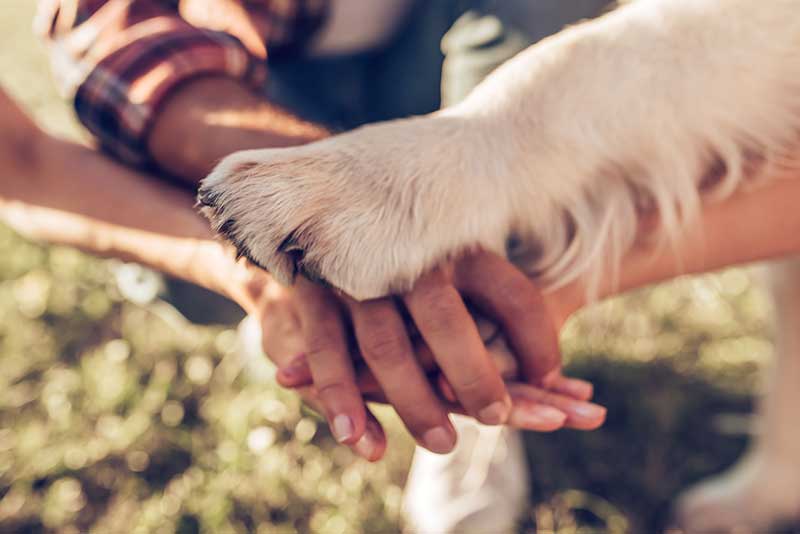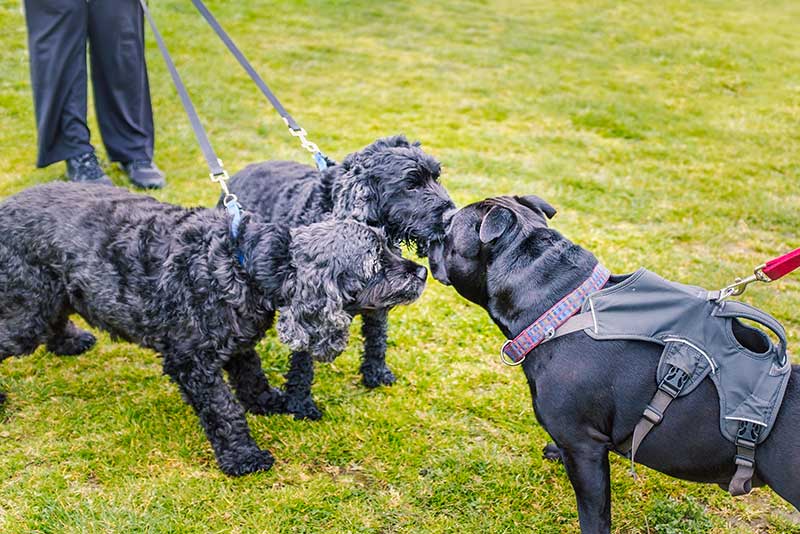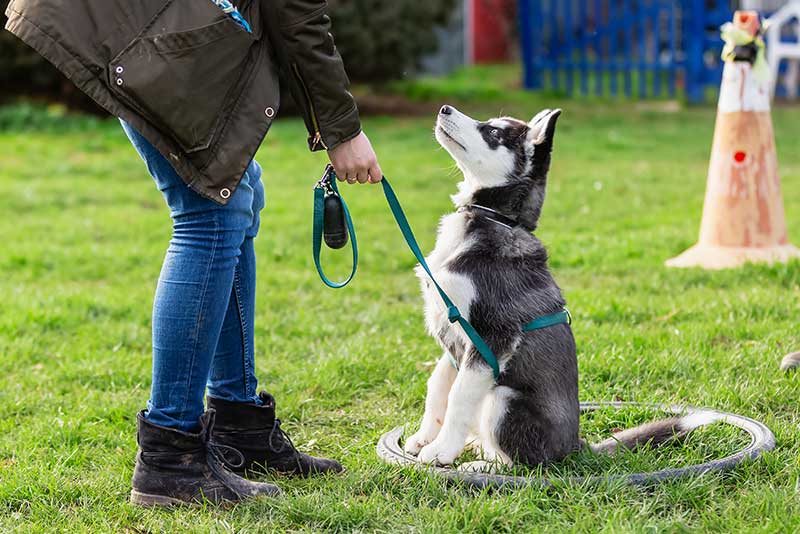Friendships and Dogs, two very important part of our life. And it is not a mere coincidence that they both influence our lives in various ways. We cannot deny the fact that a dog is bred to be a man’s best friend, but it is not mandatory that he/she is friends with another dog and other humans beside you. So, in order to keep them and others safe, we require them to pay attention to us, regardless of what is happening around them. And that is when socialization enters the topic. In this article, we are going to cover all the topics related to the How to socialize your dog with other dogs and humans.
What is socialization for a dog?
Well, the first question arises, what actually is socialization for dogs? As humans, we define socialization in a completely different manner than dogs do. In our eyes, it means meeting up with our friends perhaps at a nearby cafe, but when it comes to dogs, it does not mean meeting up at a local park to run around, as many pet parents incorrectly believe. The main purpose of socialization is to introduce your dog to new sights, sounds, and experiences, as a way of preparing them for the real world and teaching them to be confident in new circumstances. In short, the key to a happy, confident, and well-adjusted dog life is socialization.
Why to socialize your dog?
The importance of socialization for your dog and you cannot be overstated, as it can have a huge impact on the dog’s long-term health and well-being. And despite the fact that it only takes a few weeks to socialize your dog, it can teach him or her lifelong lessons. Socialization can assist a dog in developing into a well-mannered, happy companion, as well as prevent him from being fearful of other dogs and humans, whereas improper socialization can result in behaviour problems. Additionally, a well-adjusted dog could even help in saving lives because of their confidence.
What time is good for socialization?
In this ‘socialization window,’ a puppy is far more accepting of new situations and encounters since his or her brain is constantly developing, and this makes him or her a remarkably fast learner. By opening them up to new experiences during this time, they will be more likely to be happier in the future. The importance of early socialization for puppy development cannot be overstated, but if due to some situation a dog has missed his/her puppyhood socialization and training, it’s never too late. You can start it slowly and patiently at any time.
Note: Although puppies are more susceptible to many diseases at this time, that doesn’t mean they can’t go outside. This is a common misconception that puppies should be kept indoors until they have received their 12-week booster shot. It is safe to let your puppy go outside after eight weeks if you are careful and only take him to places where the risk of infection is low.
How to socialize your puppy with other dog and humans?
1. Introduce them to different sound, smells and sights
Puppies perceive everything as new, strange, and unusual, so try to expose your puppy to as many different types of people, places, sounds, and textures as possible. You can always start from your own house first. You could, for example, have them walk on carpet, tiles and floors, meet a young and old person, make them aware of the sound of vacuums, washing machines etc. If possible, make encounters with someone in a wheelchair or someone using a cane, a person with a beard, wear sunglasses, and carry an umbrella.
2. Involve your family

By having a variety of people take part in the socialization process, you continuously push the puppy out of its comfort zone. And letting the dog know it might experience something new, no matter who it is with. If you have kids in your home, make it fun play with their toys.
3. Puppy Classes
Puppies who are vaccinated can also take puppy classes. They can learn basic commands as well as socialize with other dogs and humans during these classes. There will be skilled trainers facilitating the meetings so that all dogs and people are safe and happy.
4. Canine playdate

Start by exposing your puppy to a few stimuli and expand their experience by taking them to the pet store, to a friend’s house for a playdate. A playdate consisting sweet treats and praises.
How to socialize adult dogs with other dogs and humans?
Sometimes adopted dogs have an unknown and painful history and sometimes even with the proper socialization in puppyhood some dogs may show some challenges in later life. But whatever the reason for a dog’s unsocialization, you don’t have to lose hope. There are always ways in which you can make them feel confident and comfortable. Below are some tips for socializing adult dogs:
1. Start with baby steps
It is always recommended to start with baby steps. Start with your house, analyse which situation makes your dog tense, stick to it and try to help them regain confidence. To create easy connections between you and your dog, use cues such as name recognition and touch.
2. Identify what socialization you should focus on first!
If your dog is stressed, anxious, or overexcited, make a list of those things and then rank these things in order of importance to you and your dog. As an example, you may first prioritize the ability to walk your dog without worrying about leash reactivity or fear around the neighbourhood. Once you and your dog have mastered the first item on your list, you can add more experiences to your training practice. Don’t swamp your training practice with everything at once! You’re more likely to succeed if you stick to one thing at a time rather than trying to do everything at once.
3. Take help from professionals

While making a socialization list you can take help from professionals. They can even teach you some more handling practices for some situations, as they have much more knowledge and experience than anybody.
4. Take things slowly
Rushing things up can worsen the situation. So, patience plays an important role in this process. It is very important to see the dog’s comfort level. If you want to gauge how comfortable your dog is in different environments, you should learn to read their body language. If you’re able to detect small changes in their posture or subtle signs of stress (such as lip licks or paw lifts), you can move away from or reduce the intensity of their “trigger” – what causes them stress.
What about older dogs?
After all this information you might be wondering about socialization of older dogs. Despite missing the crucial puppy socialization period, you can still help an older dog by associating their fearful or new situation with positive experiences. You can help your dog overcome fears and hesitations by slowly reintroducing him to new sights, smells, and sounds under careful supervision and by promoting positive reinforcement in the form of praise and treats.
Now we can say that we have covered almost all phases of your buddy and how we help them. But certainly, some of you might have some questions. Don’t worry we won’t let you leave with any questions on your mind.
FAQ’S
Q. How to socialize your dog with humans?
Daily morning and evening walks, dog parks, dog classes and pet shops are some of the fun ways to introduce your pet to humans.
Q. How to socialize your dog safely?
As said patience is the key. Try to expose your dog to a variety of people and if your dog is acting scared, stay calm and confident. Don’t make a big deal about skittish behaviour and do not push your dog to meet your expectations.
Q. How to socialize your dog with anxiety?
There are some dos and don’ts when it comes to socializing anxious dogs. You have to be a little more comfortable about that. If your dog is apprehensive about something, start further away and then slowly move closer as he or she becomes more comfortable. After All it’s not a race, it’s about your dog being relaxed and comfortable. Don’t push your dog to approach other dogs or people if they are not comfortable. Do let your dog choose with whom they want to interact. Do tell others what your dog needs. And do say no when they do the thing your dog is not ready for.
Conclusion
Our dog helps us through the thick and thins. They put us before anyone. And helping them socialize is the least we can do for them. You might have to put in some effort but those efforts will help them in their lifetime. In your dog’s training, you will encounter setbacks and plateaus, so don’t lose hope. Try to handle situations calmly and don’t forget to give your dog a timely reward. Be patience and lovable with your loving friend.
References

Mrs. Richa Khurana has completed her MBA in Marketing from IBS, Pune, Post Graduate Diploma in Business Journalism & Corporate Communication from Delhi University, and her BBA from IP University. Beyond her Read more



